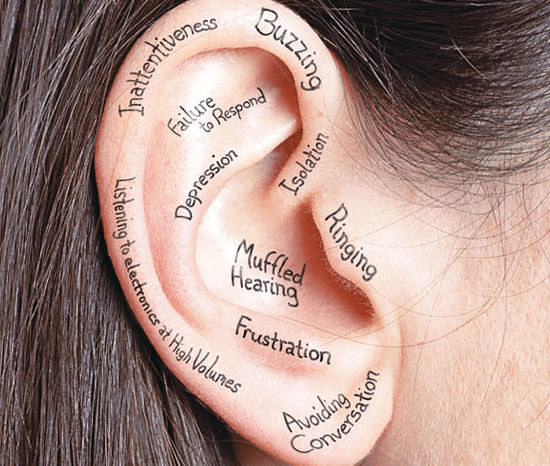Why Your Business Needs a Hearing Conservation Program?
Hearing loss due to workplace noise exposure is one of the most common yet preventable occupational health issues. For businesses that operate in environments with high noise levels, implementing a Hearing Conservation Program (HCP) isn’t just a good idea—it’s a legal requirement. In this blog, we’ll explore why your business needs a hearing conservation program, the benefits it offers, and how you can implement one to protect your workers’ hearing and well-being.

What is a Hearing Conservation Program (HCP)?
A Hearing Conservation Program is a structured approach designed to protect employees from noise-induced hearing loss. It includes a variety of measures to prevent and monitor hearing loss, ensure the use of proper hearing protection, and provide training to employees on the risks associated with noise exposure.
Key components of an HCP typically include:
- Noise Monitoring: Measuring the noise levels in the workplace to assess potential risks.
- Hearing Protection: Providing appropriate protective equipment, such as earplugs or earmuffs, for employees working in noisy areas.
- Employee Training: Educating employees about the risks of noise exposure and how to properly use hearing protection.
- Audiometric Testing: Regular hearing tests to monitor employees’ hearing health over time.
- Recordkeeping: Maintaining records of noise levels, hearing tests, and any related health concerns.
Why Your Business Needs a Hearing Conservation Program
- Compliance with Regulations
In many countries, including Malaysia, businesses are legally required to protect workers from harmful noise exposure. According to DOSH (Department of Occupational Safety and Health), workplaces with noise levels exceeding 85 decibels over an 8-hour period must implement a hearing conservation program. Failing to comply with these regulations can result in legal penalties, fines, and even business shutdowns.
- Prevent Hearing Loss and Protect Employees’ Health
Long-term exposure to high levels of noise can cause irreversible hearing damage. Workers in industries like construction, manufacturing, and mining are at significant risk, and without proper protection, they can suffer from permanent hearing loss. An effective HCP helps prevent this by controlling noise exposure and promoting the use of hearing protection.
- Boost Employee Productivity and Well-Being
Employees who are concerned about their hearing health or are struggling with hearing loss may experience decreased productivity, higher levels of stress, and overall dissatisfaction with their work environment. A Hearing Conservation Program not only protects their health but also fosters a supportive and safe work environment, improving employee morale and retention.
- Reduce Workplace Accidents
Hearing loss can make it harder for workers to hear alarms, warnings, or verbal instructions, increasing the risk of accidents or injuries on the job. A strong HCP ensures workers can maintain good hearing health, reducing the likelihood of accidents caused by communication failures or a lack of awareness of safety signals.
- Long-Term Cost Savings
Investing in a Hearing Conservation Program can help your business save money in the long run by reducing healthcare costs, workers’ compensation claims, and the loss of skilled workers. Treating hearing-related conditions and providing workers’ compensation for hearing loss claims can be expensive, while preventive measures can significantly reduce these costs.
How to Implement a Hearing Conservation Program
- Assess Noise Levels Conduct regular noise monitoring to identify areas where noise levels exceed recommended limits. This is the first step in determining who may be at risk and how much protection they require.
- Provide Proper Hearing Protection Depending on the level and type of noise exposure, provide workers with the appropriate hearing protection. Whether earplugs, earmuffs, or custom ear protection, it’s crucial to ensure that the equipment is comfortable and effective.
- Regular Audiometric Testing Schedule routine hearing tests for employees who are exposed to high noise levels. This helps monitor hearing changes over time and allows you to take proactive steps if early signs of hearing loss are detected.
- Training and Awareness Train employees on the importance of hearing protection, proper use of hearing protection devices, and the risks associated with noise exposure. Creating awareness helps workers understand why the program is necessary and how to protect their hearing.
- Create and Enforce Safety Policies Ensure that your business has clear policies regarding the use of hearing protection, and enforce them consistently. Regular reminders and refresher courses can help keep employees vigilant.
- Maintain Records Keep thorough records of noise assessments, hearing tests, and employee training. This documentation is important for compliance with regulations and can also help track trends in your workforce’s hearing health over time.
Conclusion
A Hearing Conservation Program is a critical aspect of workplace safety that should not be overlooked. It ensures that employees’ hearing health is protected, helps your business stay compliant with regulations, and improves overall workplace safety and morale. By implementing a robust HCP, you demonstrate your commitment to employee well-being and can avoid the costly repercussions of hearing loss and associated workplace injuries.
If you’re unsure where to start or need expert guidance in setting up a Hearing Conservation Program, Yellow Tulips Resources can help you design and implement a program that works for your business. Contact us today for more information!
